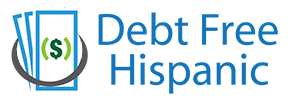It may sound obvious, but paying off debt is no easy task on a fixed income. Everyday living expenses are hard enough to keep up with, let alone trying to catch up on significant amounts of debt. If you’re feeling stretched for money, a solid tactic is to create additional sources of income.
With that in mind, I’d like to talk a little bit about making money online without spending money. These tips will explain how you can start earning a little extra money online without spending money. If you’re surviving right now with your current income, you can use 100% of any new income streams to pay down your debt.
1. Get Free Hosting
You don’t have to pay money to have an online presence. WordPress, Blogger and others offer free web hosting that you should take advantage of to get your new site off the ground. When researching which host to choose, take into account how much memory and storage space you will need, and how much bandwidth you might consume.
When the day comes that your site invites tons of traffic, thus more income, you will have to scale from a free plan to a paid one. Make sure the plan you purchase can scale up as your website traffic grows. The alternative is server downtime, meaning all those people who want to view your site, can’t. If the first host you choose experiences a lot of downtime, there are plenty of competing host providersto choose from.
2. Create Quality Content
If no one likes your content, it is impossible to make money online. You must provide something of value and establish yourself as an authority in a certain field or niche. Your niche should be whatever you are both passionate and knowledgeable about. Write insightful articles about the latest news or products in your niche, or compose informative how-to articles and lists.
No matter what you’re writing about, make it appealing by using facts and stats when possible. From planning holiday-themed parties to locating providers of wireless internet for laptops, use numbers, link to case studies and examples, and provide insight not offered elsewhere.
Using images can add value to your content, but be sure to not overload your articles with them. If you want to showcase products and have hundreds or thousands of images you want to share, upload them to image sharing sites like Flickr or PhotoBucket and link to those albums from your blog.
In general, give more than you take. This is key. Some articles are designed to sell, such as product reviews (take), and others are crafted to inform, educate or entertain (give). The 80/20 rule works when it comes to content: 80% of your articles should inform, entertain and educate, while the remaining 20% should be for commercial purposes.
3. Practice Basic On-Page SEO
SEO stands for search engine optimization, and “on-page” refers to SEO techniques that can be performed right on your own web pages. The goal of SEO is to get your site to show up and rank highly in search engine results pages (SERPs). One of the main SEO techniques involves the use of targeted keyword phrases on your site.
For example, if you created a site that deals with poker, you’d want to place keyword phrases that people would typically search for within your content. These could include “poker rules,” “poker strategies,” or longer phrases such as “best strategies for Texas Hold’em.” Finding the right keyword phrases to use in your content requires research, but this process can be aided by such tools as the Google AdWords Keyword Tool. Other on-site SEO considerations include:
- Keyword Density – The nominal keyword density, or number of keywords per page, should range from 2% to 6%. The longer the page, the greater the density may be – up to 6%. However, over-stuffing your content with keywords will turn readers away. Getting good traffic means writing for people – not search engines.
- Keywords in Header Tags – These are the H1, H2 and H3 (etc…) html tags that create headings. Use a keyword once in the H1 heading, but not more than once because it may result in a penalty to your rank. Be sure to use some keywords in smaller headings as well.
- Avoid Duplicate Content – Search engines look unfavorably upon any site that hosts duplicate content. However, some people may not even realize that they have duplicate content on their site. Three common causes of duplicate content include URL parameters created by analytics or click tracking code, printer-friendly versions of the same document, and session IDs created for different users who access the same material.
- Create an XML Sitemap – Google, Yahoo, Bing and other search engines send out programs, called robots or spiders, to index pages. These spiders cannot read certain dynamic pages that humans can, like entry forms. An XML sitemap allows the major search engines to recognize the content on these kinds of pages.
To generate a free XML sitemap for a website with 500 or fewer pages, go to XML-Sitemaps.com, enter your website’s URL and press the Start button. You’ll be sent to a page where you can download the sitemap file and place it into your domain root directory
4. Get Free Links
A key factor in your search engine rankings involves the number of links that point to your site. The more times that other websites point to yours, the higher your rank will be. But how do you get others to link to your site? Well, the most effective way is to host high quality content that people want to share. A good method of getting your articles out there is to submit them to free article directories that allow you to include a link back to your website. Some of these directories include EzineArticles, Articlesbase, and Buzzle.
5. Join An Affiliate Program
Affiliate programs are free to join, and they’re an excellent source of residual income. Affiliate marketing is a revenue-sharing plan where you place ads on your site that are relevant to your content. Visitors click those ads to visit your affiliates. You get paid for this in one of three ways:
- Pay-per-click (PPC) – you’re paid when someone simply clicks the ad
- Cost Per Action (CPA) – you’re paid a flat fee every time a visitor takes a desired action such as making a purchase or signing up for a membership
- Pay-per-lead (PPL) – you get paid when someone clicks the ad and performs a desired action, such as signing up for a newsletter with the affiliate site
If you work hard to create a quality, high-ranking site that provides an excellent user experience, the money will come. Internet marketing is not a get-rich-quick scheme, but it does work. Give your visitors a reason to visit your website and the rest will follow. Before you know it, your debt will be long gone. So get to working on building a residual income and eliminate debt so you can build wealth.


Be careful of the text link/pay per click type of income. Big G will penalize you on your search ranking with most of them which will kill the volume of traffic you receive. I tried it and got hammered 3 days later and my traffic fell by 90%. OUCH
Mom’s Deals